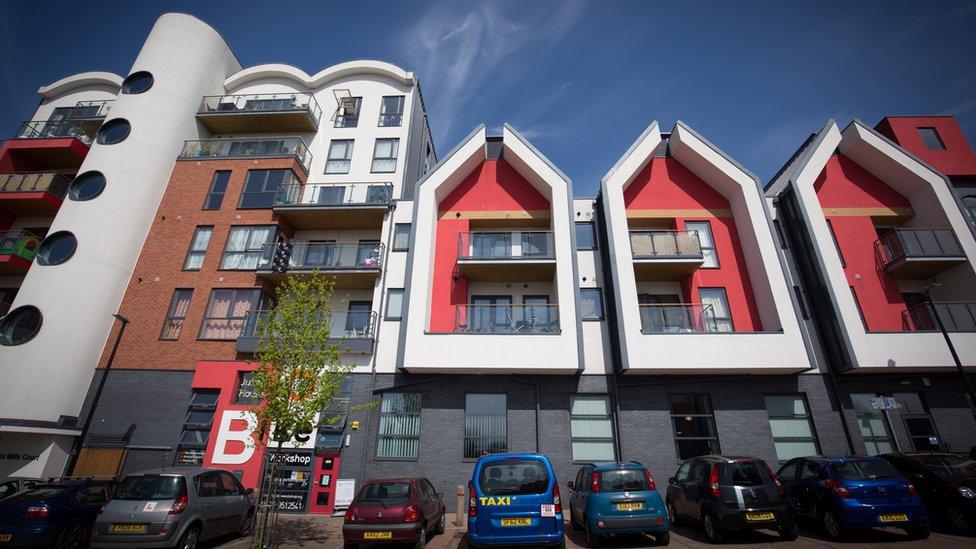Wayne Hemingway: Has designer halted housing 'Wimpeyfication'?
- Published
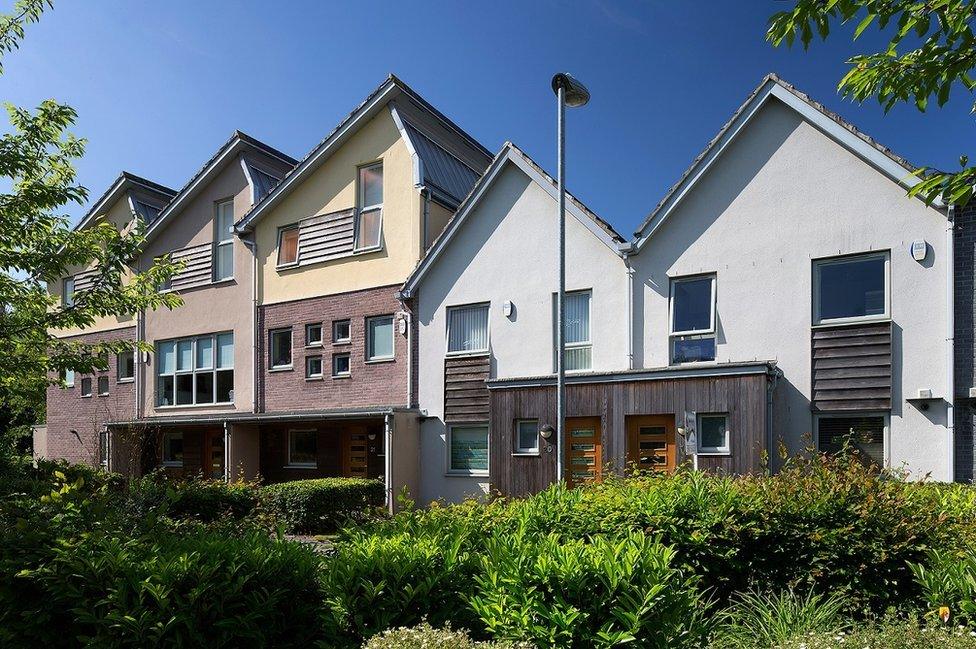
Autumn Drive welcomes visitors to the Staiths South Bank estate
It is 15 years since Wayne Hemingway hit out at the "Wimpeyfication" of Britain's new-build homes and decided to launch a design revolution in Gateshead. But has anything changed?
It was a tirade aimed at shaking the housing industry to its foundations. Property prices were rocketing, but here was a gobby northerner whose expertise lay in designing dresses weighing in to decry the "defacing" of our green and pleasant land.
The incensed opinion piece, printed in The Independent, accused firms of being "hooked on the past... pastiche... and profits".
Furore ensued. A grilling by Newsnight's Jeremy Paxman soon followed. And then, out of the blue, came a phone call from under-fire Wimpey.
The result was a daunting move into urban design for Hemingway and his wife Gerardine, and the creation of Staiths South Bank - a "forward-thinking" development of almost 600 properties on a former industrial site in north-east England.
"At first I thought they were going to take us to court for slander," recalls Hemingway, the founder of the Red or Dead fashion label. "It was complete and utter shock.

Gerardine and Wayne launched HemingwayDesign after selling their Red or Dead fashion label
"We asked if we should bring our lawyers to the meeting, but they laughed and said, 'No, we want you to work with us'.
"We thought they wanted us to design just a few houses to get good PR. We didn't realise they meant a full estate."
Overlooked by the imposing timber structure from which ships were loaded with coal during the North East's industrial heyday, external, it had lain unloved since hosting the National Garden Festival at the turn of the 90s.
Having travelled to Europe and Australia to study influential developments, out would go redbrick monotony and in its place would come a variety of house types, finished in a colourful mix of render and cladding.
Communal courtyards, barbecues and landscaping were designed to provide an open, playful, environment and its designation as a Home Zone - balancing the needs of pedestrians and vehicles - was billed among its main selling points.
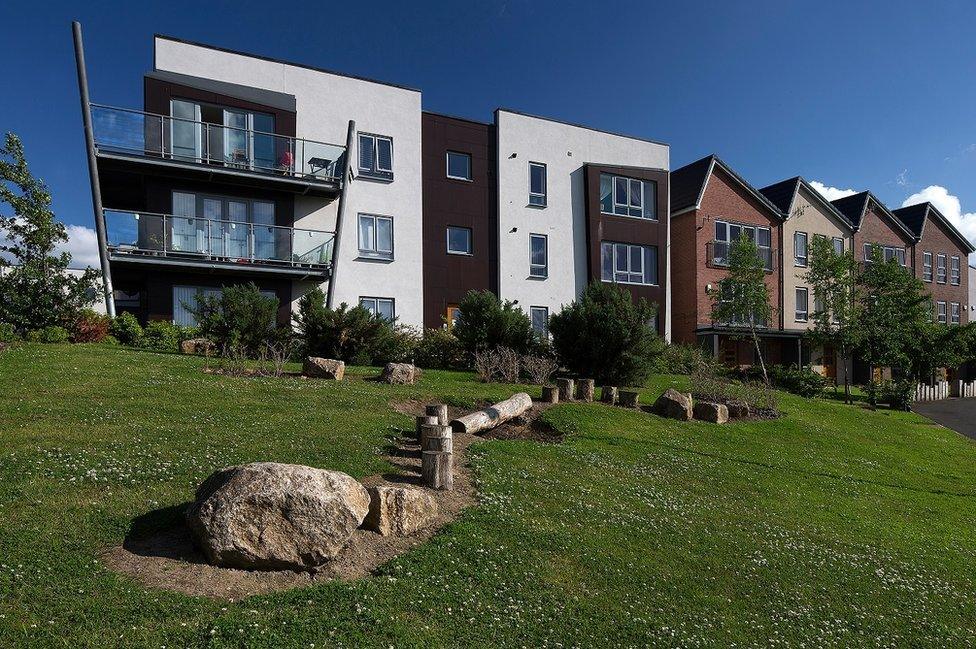
Working with designers from Glen Kemp, IDPartnership and Arup, a focus on inventive design saw uniformity eschewed
Such an approach was not without its doubters, though. Naysayers told the couple the estate would be "riddled with crime" with the barbecues leading to "the cooking of neighbours' cats".
"We saw beauty in the Staiths," Hemingway states proudly. "Wimpey said, 'Will people live next to that?' but we thought it was perfection.
"That's the brand. It's on a river, it's low land value and it's within walking distance of Gateshead town centre and Newcastle city centre.
"Housing was ugly and mean in terms of space. No-one we knew aspired to live in a new home. They all wanted an old property to do up.
"[With the Staiths] it was a definite approach to freedom and more choice, less identikit. There was more care going into the design. It wasn't just, 'Let's throw them up'. Even if the barbecues aren't being used all the time, it's a sign that life isn't all about sitting inside your house."
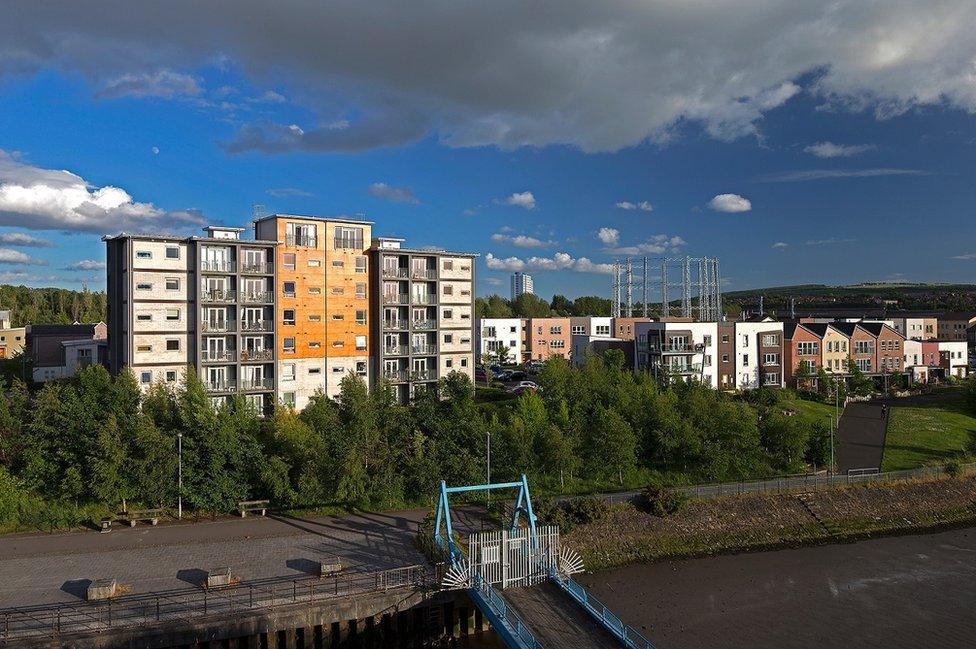
High-rise apartments were initially planned all along the riverfront, but a change of design in later phases saw a switch to houses
Such was the interest, a lengthy queue of buyers formed at the nearby Marriott Hotel when the first 180 properties were put on the market in 2003. National accolades, including Best Housing Development, soon rolled in.
The financial crash saw work slow to a crawl but, with momentum eventually regained, the final home was sold earlier this year and today the Hemingways - who lived on the estate two days a week in its early stages - are back on site for a celebratory event marking the milestone.
The residents' enthusiasm shines through, with many pointing to a strong pride in their surroundings and its friendly community-feel, although concerns over the quality of some finishes, adoption of standard Wimpey internal layouts and lack of space have also been voiced.

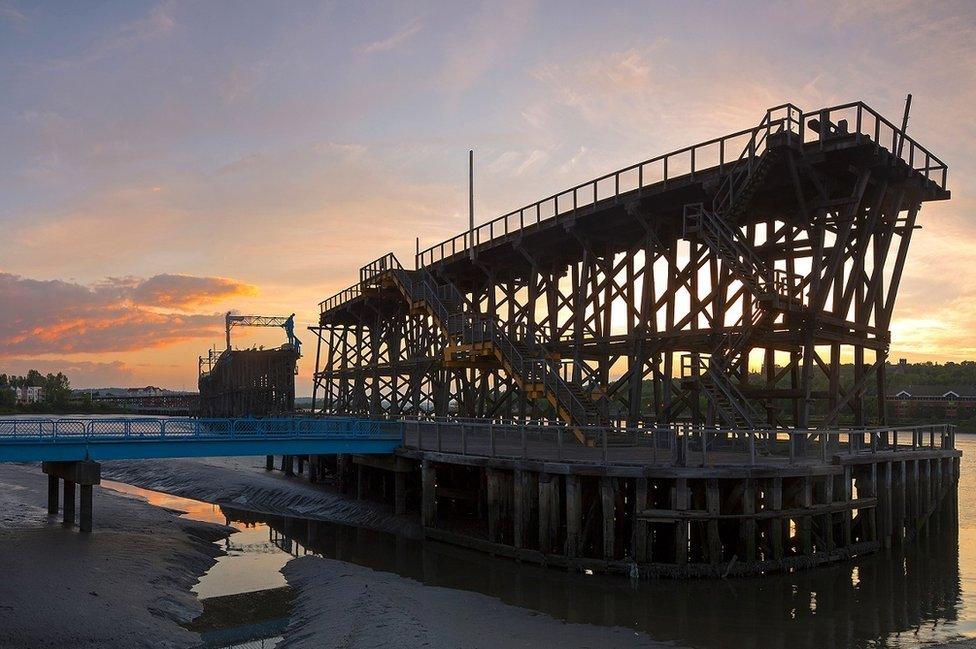
The timber staiths, a symbol of Tyneside's 20th Century industrial might, gave the estate its name
A view from the Staiths, Simon Armstrong
How time flies... I hopped off the bus and nervously made my way through the sales office door, eager to take my tentative first step on to the property ladder. Nine years on, the Hemingways' grand plan is almost complete.
The innovative design and welcoming feel are still its key attractions, although the high-minded focus on design isn't without fault. Parking is contentious with the one car per property policy ignored by many and an overspill of vehicles sees a number left on pavements and planting - with repair bills footed by all residents.
Despite that issue, the greenery and riverside setting comfortably win out. It's home and I'd have a hard time finding a similarly affordable site I love so much.

But has it helped halt the "creeping suburbs" Hemingway so vociferously attacked all those years ago?
Despite generating swathes of positive publicity, the Lancastrian argues the major house-builders have still not sufficiently risen to the challenge.
Currently working with smaller companies he believes "care and are not all about shareholder value", the 55-year-old argues an acute shortage of homes is leaving people disillusioned.
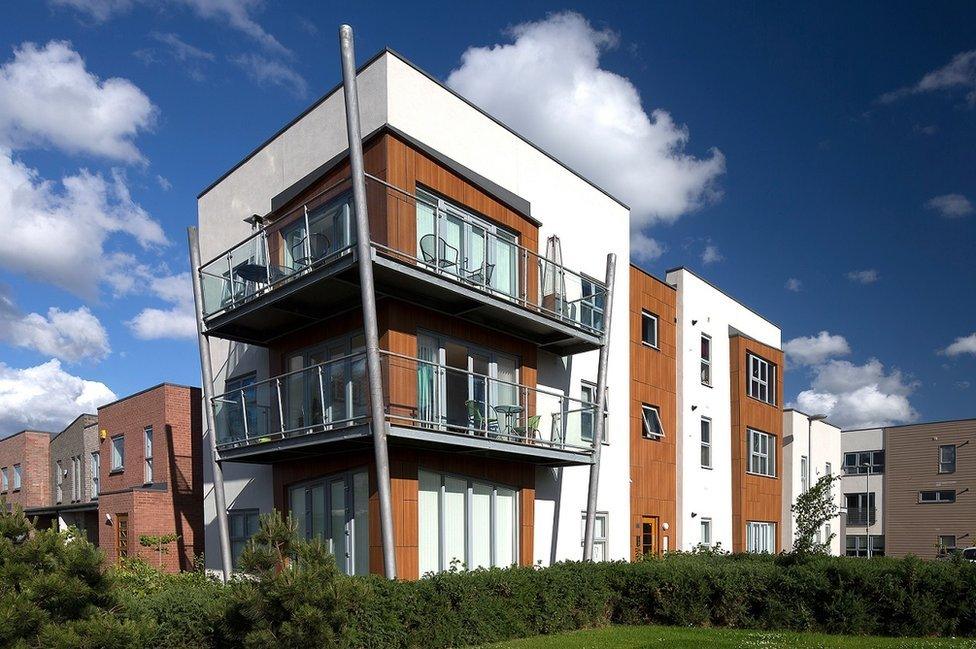
Render, timber and brickwork have been utilized in the colourful finishes
"House-builders are getting away with murder," he asserts. "They've got this government around their little finger. Cuts have affected local councils and planning departments massively. Housing companies always seem to win on appeal.
"You look at the profits. Some of them are making 20% return on investment so, for every £1m they sell, they're making £200,000 profit. It's an outrageously high return but they're only delivering half as many houses as before the downturn.
"The only solution is to build more homes with better choice and quality. It's totally doable."
Taylor Wimpey, as it is now known, declined to comment on those claims although John Foster, the firm's technical director in the North East, believes it is unfair to point fingers solely at house-builders.
"Wayne's right in so much as we haven't created a mirror image of the Staiths, but he's opened our eyes to what can be achieved. When we talk to councils we can talk about landscaping and the principle of 'adventure play' is something we do constantly now.
"Historically, estates have been driven by highways design [set out by councils]. It was quite rigid so you could drive to your home and park on your driveway. Those standards are still prevalent today.
"A lot of developers mimic the Staiths architecture - councils have picked up on that throughout the North East - but Home Zones are difficult for some to take on board. I've been at meetings where local authorities have said, 'We won't adopt the roads if you don't do what we want'."

Newcastle and Gateshead quaysides, with the gleaming Sage concert building, are a 20-minute walk away
The Home Builders' Federation is firmer in its rejection of Hemingway's criticisms and says its members have "increased output massively over the past two years".
"Last year over 180,000 homes were provided, up 22% year on year," says executive chairman Stewart Baseley. "The big companies have been the main driver behind the increases in supply and have increased their output around 60% since the trough."
He is calling for the government to speed up the planning system and councils to put in place a local plan giving them control over what is built. Such moves, he says, would "remove the need for a more adversarial 'planning by appeal' route".
By the federation's own admission, though, it is still "some way off" meeting the figure of between 220,000 and 250,000 new homes it says are needed each year to meet demand.
The Department for Communities and Local Government said it was consulting on ways to help councils "improve the quality and speed of planning decisions" and added that planning guidance was clear that poorly designed developments should be refused planning permission.
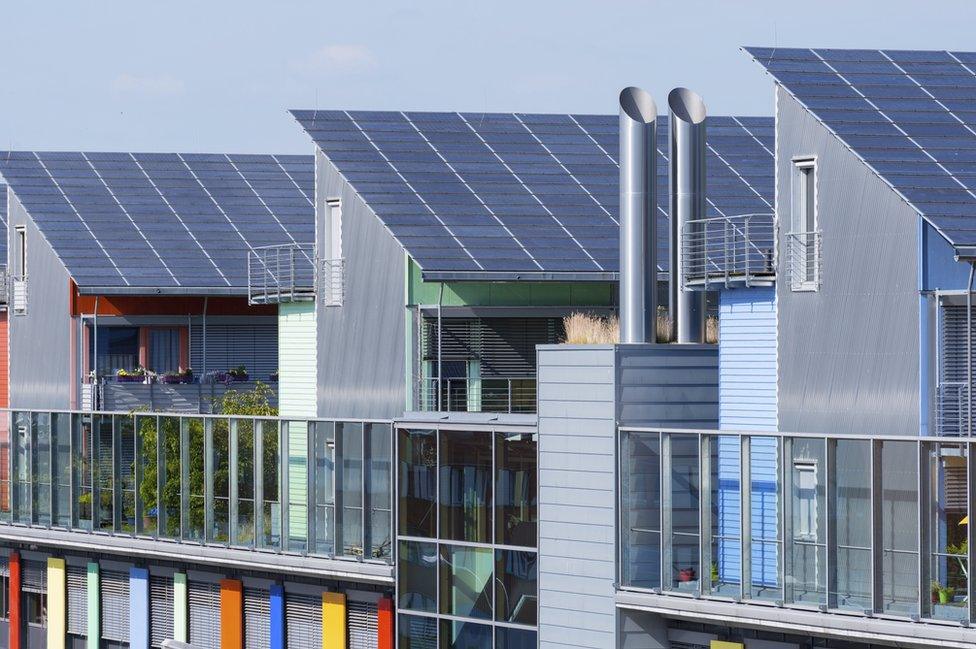
Eco-friendly homes in the Vauban district of Freiberg, Germany, were an inspiration
The argument, it seems, it set to run and run. But, while the wider debate continues, Staiths South Bank will shortly see the builders leave the site for the final time.
"People will be proud to live there for years to come," says a delighted Foster. "I look on it as a major legacy. People acknowledge their neighbours.
"I was born and brought up in [Newcastle's] Byker and you played in the streets. It's like that at the Staiths."
Hemingway, too, talks of it being a career highlight.
"There's always been a sense of achievement for the whole team," he says. "It's not perfect, there were compromises. We didn't get everything we wanted in terms of landscaping and the streets being even more anti-car. We would have been more ambitious with the architecture.
"But it's hard to name another development that's as good as it. There's certainly no better site in the North East."
- Published9 July 2020
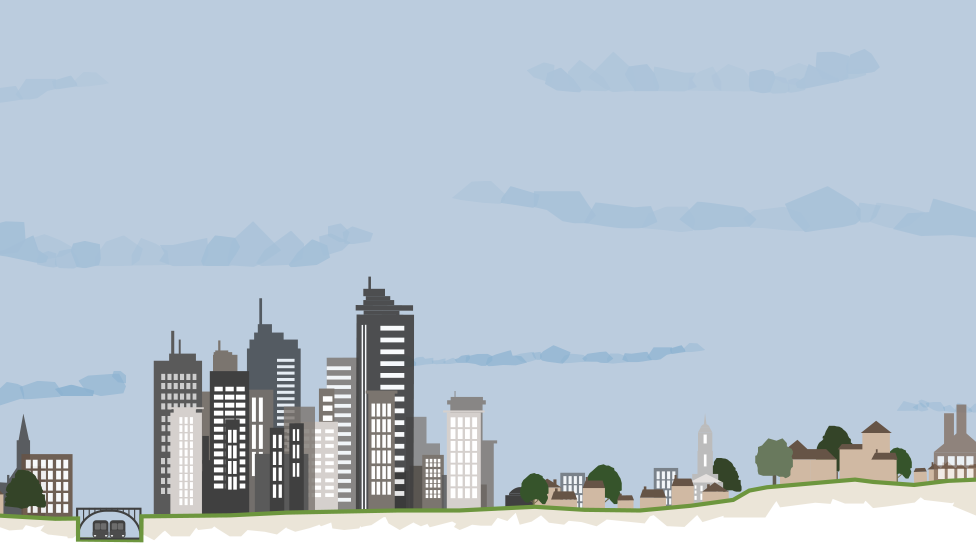
- Published24 February 2016
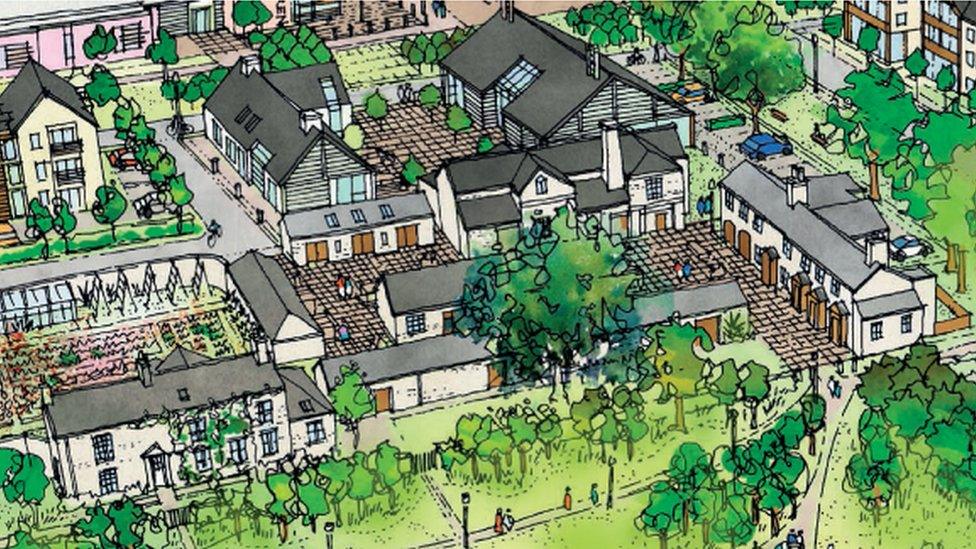
- Published7 October 2015
